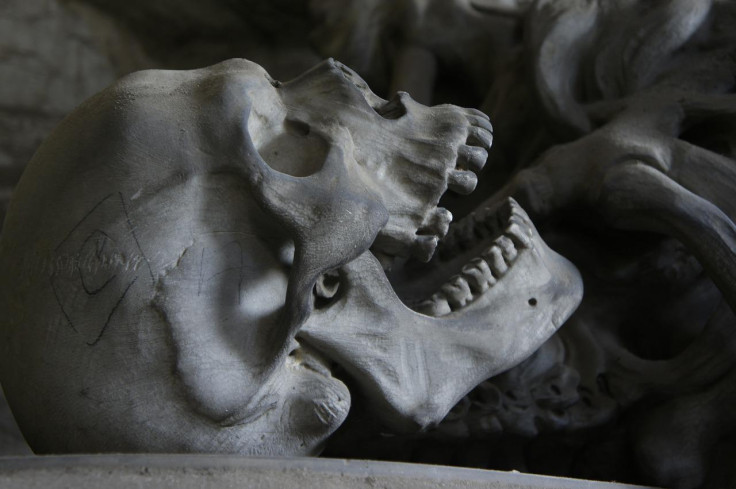Female 'Vampire' Found With Sickle Across Neck To Prevent Returning From Dead [Photo]
KEY POINTS
- A team of researchers from Nicolaus Copernicus University found the remains
- Signs suggested that people believed she was a vampire
- The sickle is believed to have been used to prevent her from climbing out of her grave
The remains of a female "vampire" were found in a 17th-century Polish graveyard with a sickle on her neck, which may have been done as part of a ritual to keep her from rising from the dead.
A team of researchers from Nicolaus Copernicus University conducted an archaeological dig that led to the discovery of the woman's remains in Pień, Poland.
The skeletal remains had signs that suggested she was seen as a vampire by local people at the time of her burial, the New York Post reported.
Padlocked, restrained female 'vampire' discovered in 17th-century graveyard https://t.co/UfX7N89NzN pic.twitter.com/bSkquD64lM
— New York Post (@nypost) September 2, 2022
The woman had protruding front teeth. This may have been one of the reasons that pushed people to deem her a vampire, according to Heritage Daily.
The woman was pinned to the ground in her grave with a sickle across her throat and a padlock around her toe. Reports said the farming tool was often used in rituals in the 1600s to ensure a person, branded as a vampire, would not climb out of their grave and prey upon them.
Team lead Professor Dariusz Poliński said the sickle was placed on the woman's neck in a manner that her head would have been cut off or injured if she tried to rise up. The padlock, found around the big toe of the woman's left leg, is another sign that supports the "vampire" theory.
Records from the 11th Century show Polish people used to fear female vampires. The belief was that the dead would claw their way out of their graves and turn into undead monsters, roaming the streets at night, according to the Jerusalem Post. People feared they would drink the blood of the living and, hence, conducted rituals that included vampire-proof methods to keep them from returning from the dead.
While it was unclear how old the woman was, researchers believe she was someone of high social status because of a silk cap found on her skull.
This comes seven years after five similar skeleton remains were found about 130 miles away in the Polish town of Drawsko. Sickles were also found across each of their throats in a similar fashion.
Archaeologists also discovered multiple skeletons with their heads decapitated in the Polish city of Gliwice in 2013, the New York Post reported. The severed heads were placed near the legs. This was also believed to be a ritual to ensure the dead stayed dead.

© Copyright IBTimes 2024. All rights reserved.






















